A conversation with Peter Tepe | Section: Interviews
Abstract: Meral Alma is a young painter whose works in academia are interesting for w/k– she is PhD candidate in New German Philology. She belongs to those ‘border-crossers’ between science and the visual arts, who keep both professional occupations separate from one another. Using a variety of examples, she presents two phases of her artistic practice.
Meral Alma, although you are still studying at the Düsseldorf Art Academy under Siegfried Anzinger, as a painter over the last three years you have managed to position yourself remarkably well in the art market. Seven solo exhibitions, participation in over twenty group exhibitions, two-time winner of the talent award of the Düsseldorf Art Academy. In the action 23 International Artists Design a Heart for UNICEF you designed a heart for Turkey. The exhibition will be shown throughout Germany. Among the participants were Günther Uecker for Germany, Tony Cragg (former director of the Düsseldorf Art Academy) for England and Rita McBride (current director of the academy) for the USA.
For Zwischen Wissenschaft & Kunst (Between Science and Art) it isn’t solely your painting that has brought you into the spotlight but also because you work in the realm of academic research – you are a PhD candidate in the field of modern German philology at the Heinrich-Heine University Düsseldorf. It is the way you embody this connection between science and the fine arts that we would like to explore in more detail in this conversation. But to start with, could you perhaps describe the background to your PhD project?
Before I began studying art in 2009, I had been enrolled from 2003 to 2008 in a master’s course at Düsseldorf University studying German philology and sociology. In 2008 I suspended my studies, first to take time abroad at the Harvard University Summer School in Cambridge, Boston, and after that to take up my studies of fine art. Having completed my master’s degree in 2012, I am now continuing with my studies of art.
What was your master’s thesis about?
The subject of my German philology project supervised by Hans-Georg Pott was The image of Turkish women between tradition and modernity in the work of Leila Erbil and Feridun Zaimoglu. Peter Tepe acted as second assessor, and it was he who enabled me to publish the project in Mythos-Magazin. You can read it here.
What themes did you explore in your master’s thesis?
I analysed the novels A Strange Woman by Leyla Erbil and Leyla by Feridun Zaimoglu in relation to the following questions: what kinds of images of woman are projected in the texts by these two authors? Which factors have influenced the way these images were shaped and what are their historical roots? How are we to explain the authors’ different points of emphasis?
Did you at this point already have the wish to write a PhD thesis dealing more closely with migrant literature with a Turkish background?
Yes. While I was writing my master’s thesis I discovered that although numerous academic treatments of the image of Turkish women in migrant literature had been written, almost nothing had been done on the image of Turkish men. So very early on I decided I would fill this academic void. The PhD thesis supervised by Peter Tepe has the working title Der türkische Mann in der Migrationsliteratur (The image of Turkish men in migrant literature). But because I am bound up so much with my art this research project is still at a fledgling stage.
Let’s now turn to your work as an artist. Looking back, can you discern different stages of your development?
My work from when I began studying art in 2009 until today can be broken down into several phases. To put it simply, you can distinguish between early and current works. In my early works (2009–2011) I focused mainly on achieving – in the broadest sense – a realistic depiction of people and scenes from human daily life.
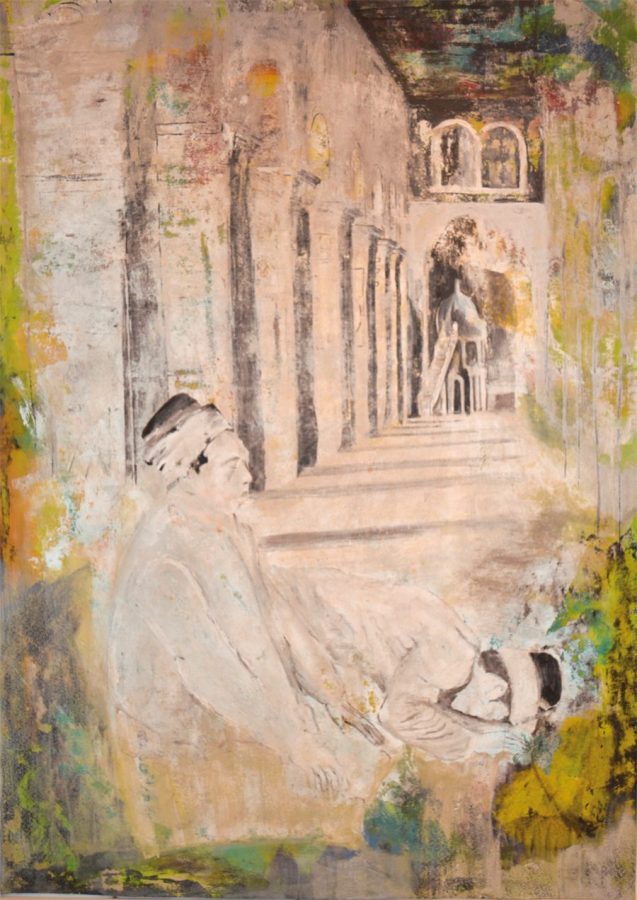
Figure 1 shows two men in prayer. The figures are by and large realistically portrayed. The picture’s margins convey the idea of a personal memory.
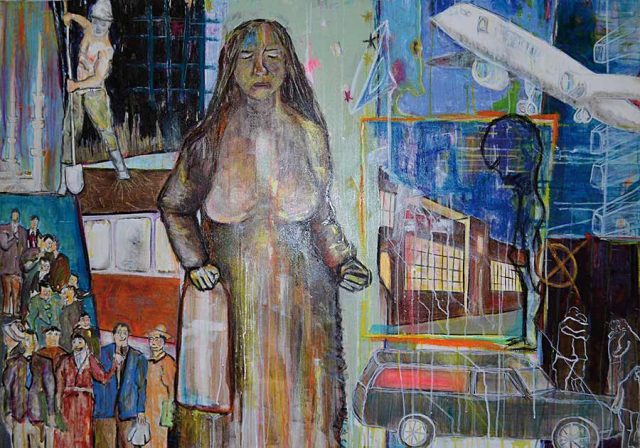
The second work (fig. 2) is the last piece I did during the early phase. In terms of composition it is already considerably more abstract. In a kind of collage it represents the story of a migrant.
Did you choose this subject because your own family has a migrant background?
No, it has more to do with the migrant issues I was concerned with while I was doing my master’s thesis and which influenced my choice of pictorial subjects. But beyond that, there was a personal family dimension both in my literary studies and in my choice of motifs. My grandmother came from Turkey to Germany in 1973. From early on, my family were actively involved in integration. For instance, my aunt founded a German-Turkish friendship circle, for which she was awarded the integration award by the town of Neuss. I was born in Germany. Through my parents, my grandparents and their parents I have Arab-Turkish roots, so I grew up in several cultures at the same time. Apart from German and Turkish, my parents also often speak Arabic. The first words I uttered were Turkish, and I learned to write in German at a Catholic primary school. Since my childhood I have loved Christmas, which doesn’t mean I would ever miss a Turkish Sugar Festival.
Let’s talk about your latest works – maybe based on a couple of examples.
Since 2012 my pictures have become more abstract. They now attempt to grasp the essential aspects of human relations, of human needs and of the crucial or minor stories of life. Spanning all cultures, as it were, these are depicted in figures, faces and collaged works. Since then, with just a few exceptions, the focus no longer lies on the realistic portrayal of figures and scenes but on transferring onto canvas (or paper) the essence of a scene taken from life, of a feeling, of an expression or of some occurrence.
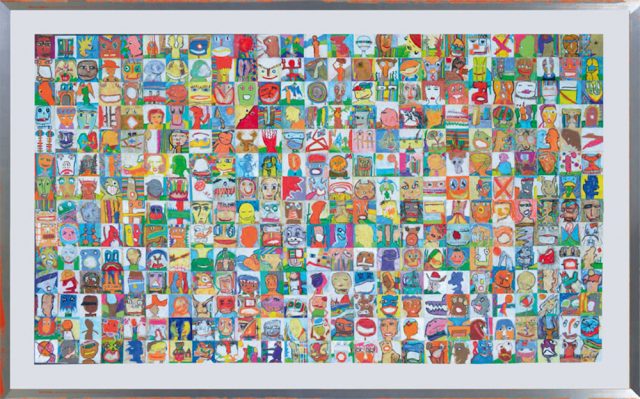
In the large collages (see fig. 3) I might, for instance, juxtapose up to 400 ostensibly flat portraits like a mass of cells in a single work. On the one hand this representational form highlights a society increasingly characterised by individualism as well as anonymity. Equally, it confronts the viewer with a particular perspective, mimicking a style found in the media, as on TV (with its flat pictorial space), in Facebook (the profile shot) and other recent dating apps for smartphones (where you are offered hundreds of faces and images which you can “like” or simply swipe aside). At the same time, a pictorial world is unfurled across the canvas where the viewer can identify correspondences between figures that share similar visual features. The way I imagine it is that while they are still unacquainted with each other in the picture, one day they will get to meet. Furthermore, the “reader” of the picture will discover figures who are looking at each other, who are already interacting in this pictorial space.
So in your works are you consciously making reference to modern society?
Yes. As I see it, it’s not just the subject matter but also the form of artistic treatment that corresponds to contemporary society. The same is true of my works about the circus of life or urban life.
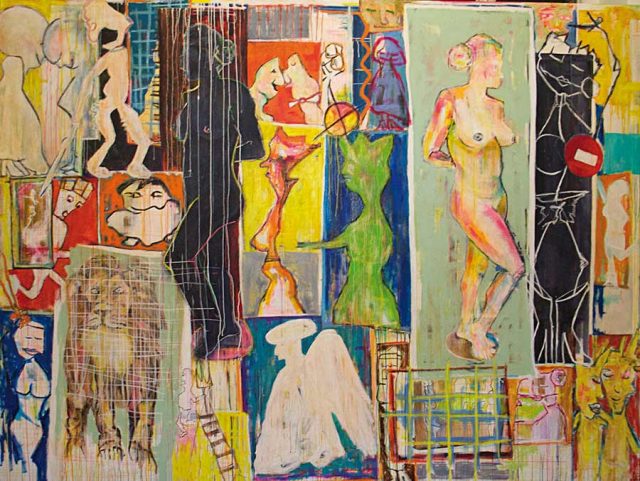
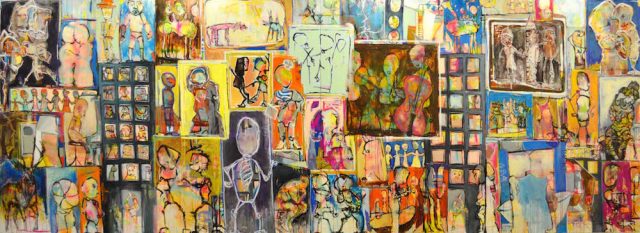
Would you say that the artistic direction you were pursuing in some of your earlier works, realistically depicting people and scenes from human life, has now given way to a different approach?
That’s right. At the moment I would phrase my present artistic orientation like this: my primary concern is to represent by artistic means the essence of a scene in life, of an occurrence, of a feeling.
What do you mean by the essence, say, of a certain occurrence?
For me, essence means the (most) fundamental quality, the inherent nature, the core of something. It’s best explained with the symbolism of signs. In electronic communication, for instance, a smile is frequently depicted with the characters : ). Similar types of symbolism such as the no entrance sign can be found in a number of my works. They indicate an intractable or dead-end situation, or a person who is always getting caught up in situations like this.
But I use these kinds of pictograms only very rarely since my painting is on various levels focused on conveying this underlying core of something to the viewer, enabling people to experience it for themselves.
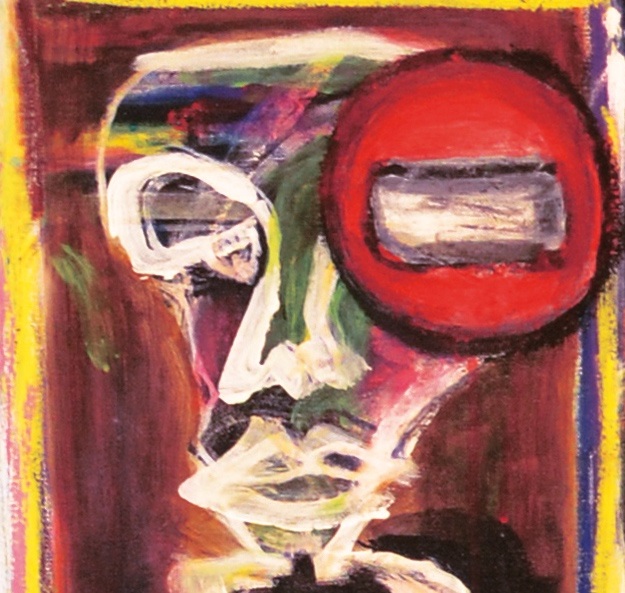
The work featured here shows a moment of profound devotion, a sense of security and empathy. Two figures are joined into a single form with simple strokes. Form, colouring, the flow of lines, dripping paint and just a few strokes in the face complete the overall impression. Key elements for me, such as the two clasped hands, are given particular emphasis.
As I am painting the picture I am able to recreate this moment, and this in turn contributes to the consummation of the work. A lot then happens quite intuitively. From my perspective the painting thus becomes a multi-dimensional snapshot of an event with all the accompanying impressions and emotions. Analogous to music where mood is also transported to the listener by inaudible frequencies, thereby rounding off the musical experience, abstract painting also differs from photography in that such aspects as brushstroke, colouring and form convey to the viewer much more than the mere representation.

In w/k, individuals who are active in the realms both of art and scientific or academic research – in your case, in relation to your PhD studies – are considered border crossers between science/academic research and (visual) art. We should try as precisely as possible to identify the connections in your work especially between artistic activity and literary research.
In my view, your painting cannot be described as scientifically pertinent art in the sense of being based on the theories and/or methods and/or findings of one or another scientific or academic discipline.
I agree. My painting has no relation to any particular scientific discipline.
It seems the links between your academic work and your artistic activities are most evident on a thematic level.
What mostly interests me are people as individuals and their relations within social interaction. This core interest is what propels my artistic work: in my painting I am concerned with people’s appearances, their body language, their behaviour in a social context. And it is the same core interest that drives my philological studies.
Can you expand on that?
It begins with my enthusiasm for literary texts. They are always about people and social interaction. Which is why this medium gives such nourishment to my basic interest. One consequence of my family’s Turkish migrant background is that I am particularly moved by texts dealing with migrants and their problems with integration.
Correspondingly, on the level of literary criticism you can argue that my basic interest is what sparks my urge to undertake academic literary research into figures and their social interaction, especially when it comes to the depiction of migrants in literary contexts.
So in short, you bear the same fundamental interest towards people in painting as you do in your reading of literary texts and philological analysis of literature? This underlying interest in human affairs seems also to be related to a set of convictions one might define as a positive world outlook.
Part of my basic credo is that, wherever I can, I try to emphasise the positive aspects and opportunities arising from any particular situation. I feel enriched by cultural diversity and regard the whole world as my home. As a consequence I want to create art that – to quote Sabine Heinke – “directly addresses the viewer, that touches him emotionally”.[1]
Your fundamental attitude contrasts with the pessimistic stance of many other artists, especially today, whose view of the world is defined by disaster scenarios and the loss of hope. The fact that your painting so tangibly conveys a positive world outlook has surely been a considerable factor in your success up till now?
That’s hard to say. Many of those who are keen on one or another of my pictures feel moved by this and can identify with certain scenes or figures. In my opinion, art must touch the viewer and move something in him.
Meral Alma, thank you for this enlightening conversation.
All works and copyrights: Meral Alma
Translation: Matthew Partridge
[1] Sabine Heinke, Meral Alma: Malerei Painting 2015. Düsseldorf (2015), p. 13.
How to cite this article
Meral Alma (2016): Meral Alma: Painter and PhD Candidate. w/k–Between Science & Art Journal. https://doi.org/10.55597/e2064
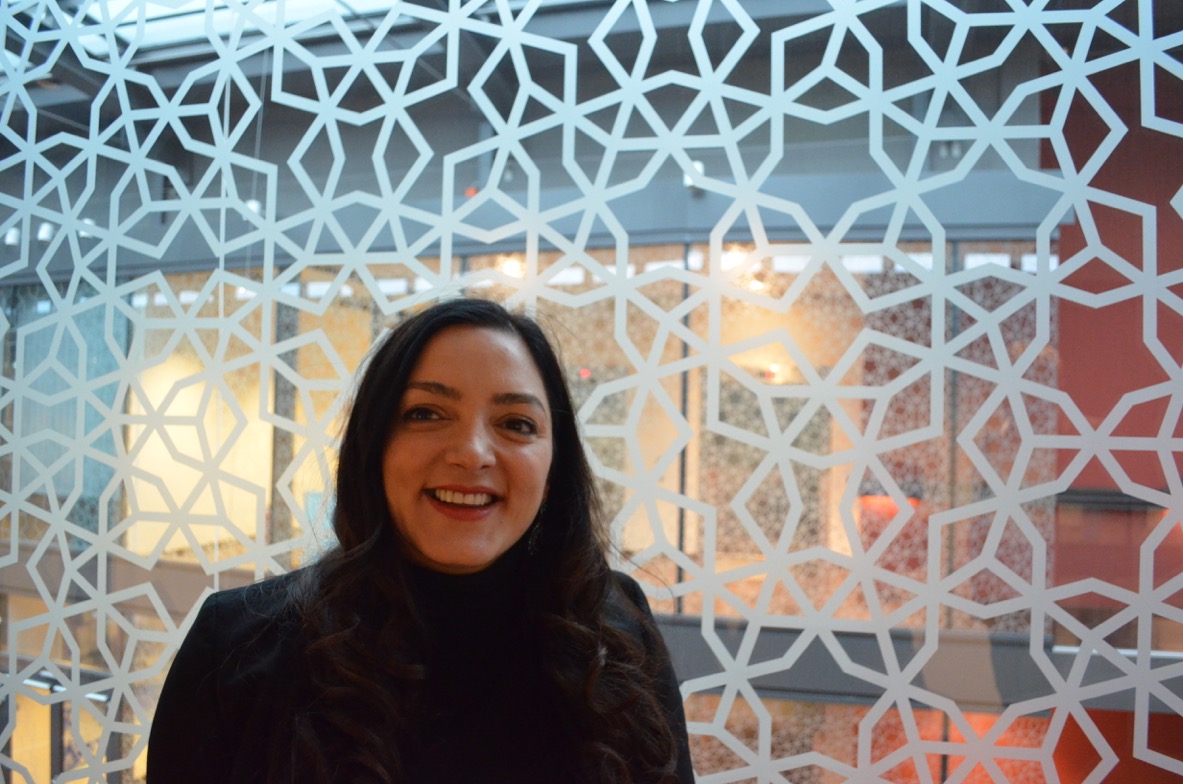

Be First to Comment